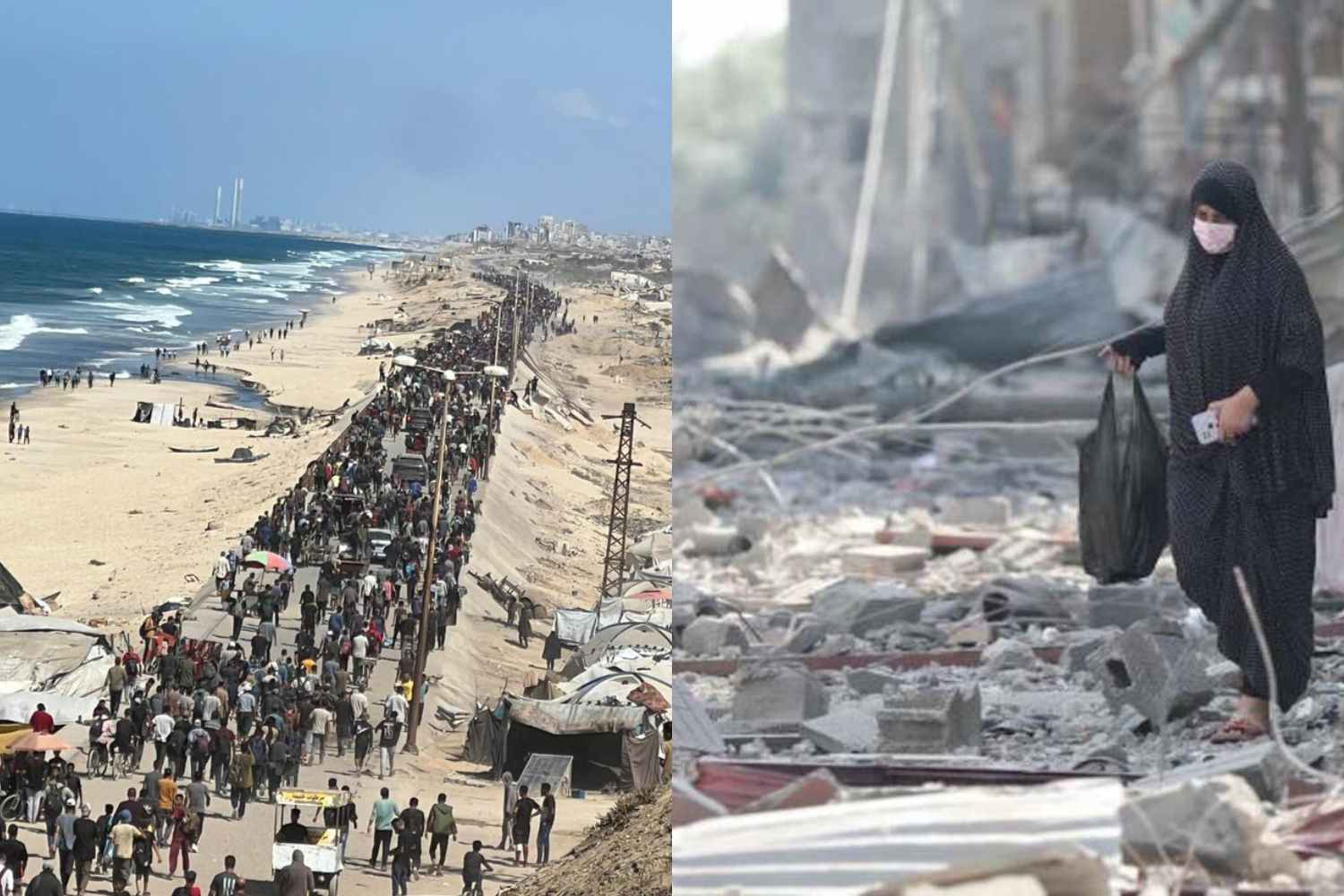Following the agreement between Israel and Hamas, thousands of displaced Palestinians return north to see their destroyed homes. While awaiting the release of hostages, the population faces a pilgrimage marked by devastation and fragile hope

Thousands of Palestinians have taken to the road toward northern Gaza Strip, in a slow and exhausting return to their homes devastated by bombardments. After two years of massacre and weeks of waiting, the ceasefire between Israel and Hamas was announced and came into effect today at noon (local time), marking the beginning of a fragile truce process and partial withdrawal of Israeli troops.
As images released by journalists show, massive columns of displaced people moved along the coast, heading toward Gaza City, the largest urban area of the enclave, now largely reduced to a pile of rubble. “Thank God my house is still standing, but the neighborhood is destroyed,” recounted Ismail Zayda, 40 years old, from the Sheikh Radwan neighborhood. Around him, remains of gutted buildings, interrupted streets, and a landscape that many no longer recognize.
Peace be upon you for your patience, O people of Gaza. pic.twitter.com/Dy1FkQMNVt
— Osama Abu Rabee أسامة أبوربيع (@dn_osama_rabee) October 10, 2025
The agreement, ratified by the Israeli government in the early hours of Friday, provides for the release within 72 hours of twenty Israeli hostages still alive in Gaza, in exchange for the liberation of 250 Palestinian prisoners and another 1,700 detainees held during the conflict. But while authorities spoke of truce, yesterday in the Strip gunfire and tank shots could still be heard, a sign of tension that does not easily fade.
The open questions of this fragile peace
U.S. special envoy Steve Witkoff declared that “the first phase of Israeli troop withdrawal has been completed” and that the period for prisoner exchanges and hostage handovers has begun. Once the agreement is operational, trucks loaded with humanitarian aid should reach Gaza to distribute food and medicine to the exhausted population.
In Khan Younis, in the south, some Israeli units have abandoned their positions, but in several areas sporadic violence continues to be recorded. In Nusseirat, in the center of the enclave, some residents reported seeing soldiers leave the area while, not far away, explosions could still be heard.
The return to Gaza City has been described by many as a pilgrimage through the ruins. “There is nothing left, but we just want to return to where our homes were,” explained to Reuters agency Mahdi Saqla, 40 years old. “Even walking among the rubble is a form of hope.”
The war — which lasted two years — has left behind over 67,000 dead Palestinians and an entire displaced population. Israel’s international relations today appear deeply fractured, while Hamas claims to have received guarantees from the United States and other mediators that the war “is truly over.”
Yet many knots remain untied: the official list of Palestinian prisoners to be released has not yet been published, and the political fate of the Gaza Strip after the conflict remains uncertain. Israel continues to control about half of the territory, and Prime Minister Benjamin Netanyahu reiterated that “Israeli forces will remain in Gaza to ensure the demilitarization of the territory.”
Meanwhile, the civilian population faces another emergency: the environmental and health crisis. Beyond the humanitarian disaster, the destruction of water and sewage infrastructure has compromised essential resources for survival. Humanitarian convoys will have to face an enormous task: bringing back drinking water, electricity, and health care to a territory now almost uninhabitable.
Today Gaza tries to breathe amid dust and fear, suspended between the desire for peace and the awareness that every truce, in this wounded land, can break at any moment.
Source: Reuters
